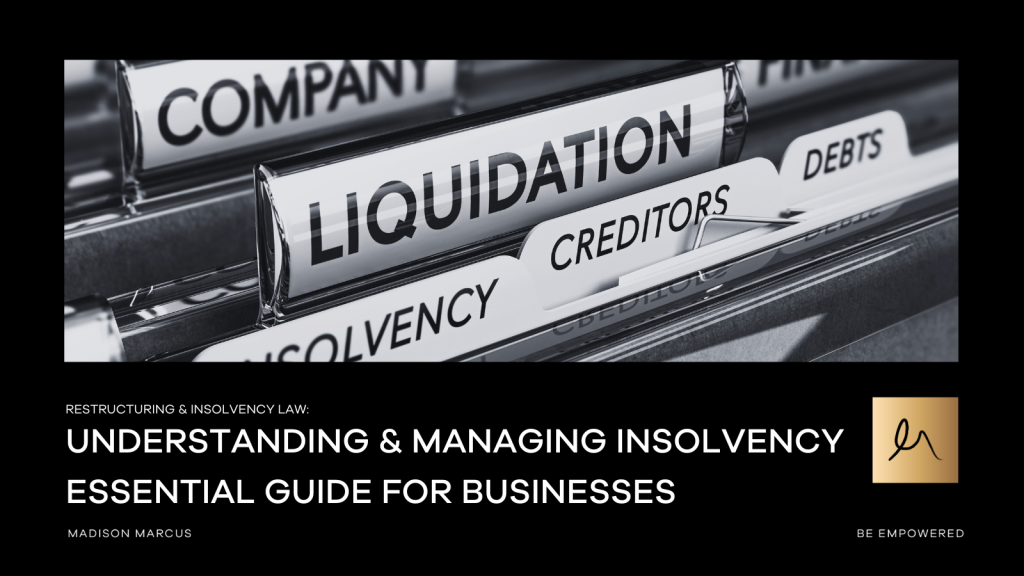Surviving Financial Distress: Your Guide to Insolvency Solutions
Industry Insights and Trends
Corporate insolvencies are rising in Australia, with recent data indicating a significant increase. According to ASIC, corporate insolvencies for the 2022-2023 financial year numbered 10,366, the highest level since 2019, when there were 11,224. Analysts predict this trend will continue, exacerbated by higher interest rates and other economic pressures^.
Maria O’Brien, chair of the Turnaround Management Association, notes that sectors such as construction and accommodation have been particularly affected. “Interest rate rises are going to bite in particular industries and overleveraged businesses this year,” O’Brien says. Additionally, the Australian Tax Office (ATO) has intensified efforts to recover overdue small business tax, initiating numerous wind-up proceedings^.
What is Insolvency?
Insolvency occurs when a company or individual cannot pay their debts as they fall due. Recognising the signs of insolvency is crucial, as it can have significant legal and financial consequences. Early detection and seeking appropriate financial and legal advice can provide the best opportunity to successfully navigate out of insolvency.
Signs Your Company May Be Insolvent
Here are some indicators that your company might be facing insolvency or financial distress:
- Persistent financial losses.
- Poor cash flow with a higher value of debt than liquid assets.
- Overdue Commonwealth and State taxes.
- Difficulty in borrowing funds or obtaining finance.
- Unpaid creditors beyond regular trading terms.
- Dishonoured cheques.
- Legal proceedings, judgments, or warrants issued against the company.
- Inability to produce timely and accurate financial information to display the company’s trading performance and financial position and make reliable forecasts.
Consequences of Insolvency
Despite the stigma, insolvency can often result from market conditions beyond the control of the company’s management. However, understanding your obligations is vital if you suspect insolvency. Continuing to trade while insolvent can lead to civil penalties and criminal charges under the Corporations Act 2001 (Cth). Directors may also become personally liable for the company’s debts if they allow it to trade while insolvent.
Options for Insolvent Companies
1. Voluntary Administration
Voluntary administration helps financially distressed companies, sometimes allowing them to restructure and avoid liquidation. An independent administrator takes control, assesses the company’s viability, and proposes a plan that may involve the sale, closure, or limited continuation of trading.
Process:
- An administrator is appointed.
- A first creditors’ meeting is held within eight business days.
- The administrator investigates and reports on the company’s affairs.
- A second meeting is held within 25 business days to decide the company’s future.
2. Liquidation
If a company cannot be saved, liquidation involves winding up the company. A liquidator is appointed to protect, collect, and sell assets, investigate the company’s failure, and distribute the proceeds to creditors.
Types of Liquidation:
- Creditors’ Voluntary Liquidation: Initiated by creditors or following a voluntary administration.
- Court Liquidation: Ordered by the court following a creditor’s application.
Taking Action
If your company is struggling to pay its debts, seeking professional legal advice is crucial. Early intervention can maximise the company’s chances of survival and minimise directors’ personal liability.
How Madison Marcus Can Help
Our specialised bankruptcy and insolvency team at Madison Marcus understands the critical need for timely and precise advice. We develop decisive strategies for companies and individuals facing financial difficulties, aiming to achieve the most favourable outcomes for your situation and your company’s future well-being.
^Australian Institute of Company Directors. (2024). “Corporate Insolvencies Rise in Australia.” Retrieved from AICD.
MM Website Enquiry Form
Form used to capture all MM website enquires. Will be used in Monday and Mailchimp via Zapier
"*" indicates required fields







